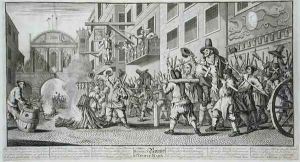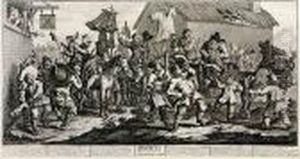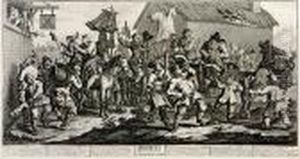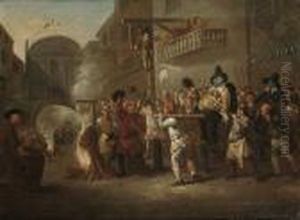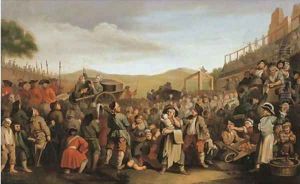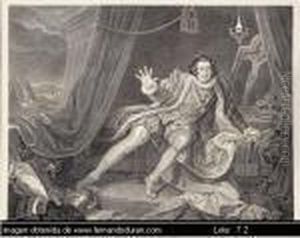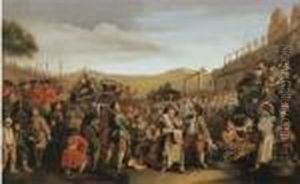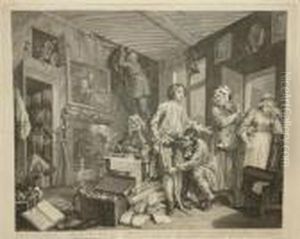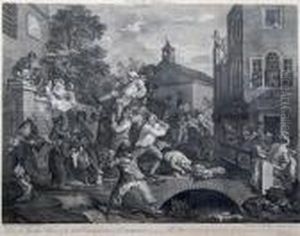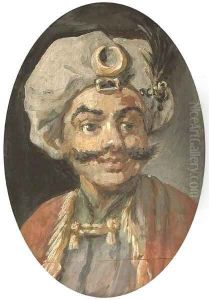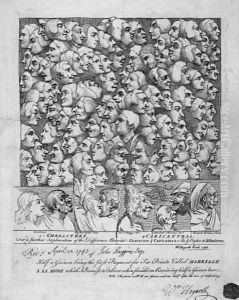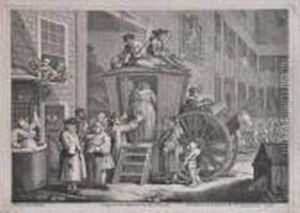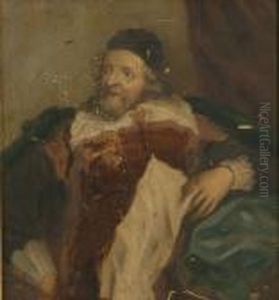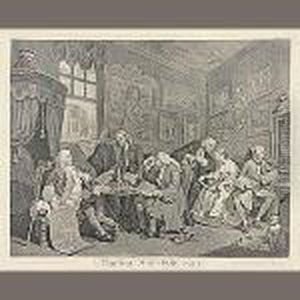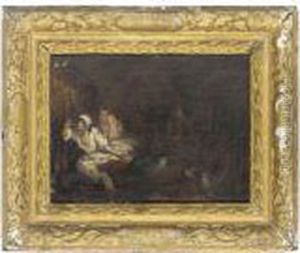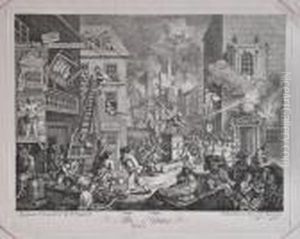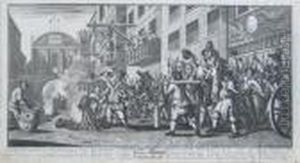





Hudibras Encounters The Skimmington; Burning Ye Rumps At Temple-barr
-
About Reproduction
Discover the allure of art with our faithful reproduction of "Hudibras Encounters The Skimmington; Burning Ye Rumps At Temple-barr", originally brought to life by the talented William Hogarth. Unlike posters or prints, our hand-painted oil painting breathes an unique sense of depth and texture into your space. Every detail, every stroke, and every texture is meticulously recreated, paying the perfect homage to William Hogarth and his artistic vision.
Owning this piece is more than just decoration - it's a statement of your refined taste in art. Let the vibrant colors and intricate details of this replica serve as a daily reminder of the beauty in our world. Elevate your decor and appreciate the richness of art with our replica of this masterpiece.
-
Painting Description
"Hudibras Encounters The Skimmington; Burning Ye Rumps At Temple-barr" is an engraving by the renowned English artist William Hogarth, created in the mid-18th century. Hogarth, celebrated for his satirical and moralistic works, often depicted scenes that critiqued societal norms and political events of his time. This particular engraving is part of a series inspired by Samuel Butler's satirical poem "Hudibras," which was first published in the late 17th century. The poem itself is a burlesque on the Puritans and the English Civil War, and Hogarth's illustrations bring its characters and episodes to life with vivid detail and humor.
In "Hudibras Encounters The Skimmington," Hogarth captures a moment from Butler's narrative where the protagonist, Sir Hudibras, witnesses a skimmington ride—a public shaming ritual where a man and woman, often representing a henpecked husband and a domineering wife, are paraded through the streets to the jeers of onlookers. This scene is rich with Hogarth's characteristic attention to detail and social commentary, highlighting the absurdity and cruelty of such public spectacles.
The second part of the engraving, "Burning Ye Rumps At Temple-barr," references a historical event tied to the political turmoil of the period. The "Rump Parliament" was the remnant of the Long Parliament after Pride's Purge in 1648, and its dissolution in 1653 by Oliver Cromwell led to widespread political unrest. The burning of rumps, or effigies representing the Rump Parliament, became a symbolic act of protest and celebration of its downfall. Hogarth's depiction of this event at Temple Bar, a historic ceremonial gateway in London, serves as a pointed critique of the political instability and factionalism of his era.
Through this engraving, Hogarth not only illustrates scenes from Butler's work but also embeds his own commentary on the social and political issues of 18th-century England. His ability to blend humor with incisive critique has cemented his legacy as one of the foremost satirists in the history of British art.
-
Lead Time & Shipping
When you order this oil painting replica, it typically takes 2-3 weeks to paint. If the artwork is more complex, it might need a little more time to ensure the best quality. Once it's ready, we'll send you a photo for your approval. After you give the green light, we'll ship it to you for free.
-
Return & Refund
We believe in the quality of our hand-painted oil painting reproductions, and your satisfaction is our priority. If for any reason, you are not completely satisfied with your purchase, we offer a 45-day return policy. You can return your artwork within 45 days of receipt and receive a full refund. Please note that the artwork must be returned in the original packaging and in the same condition as it was received.





